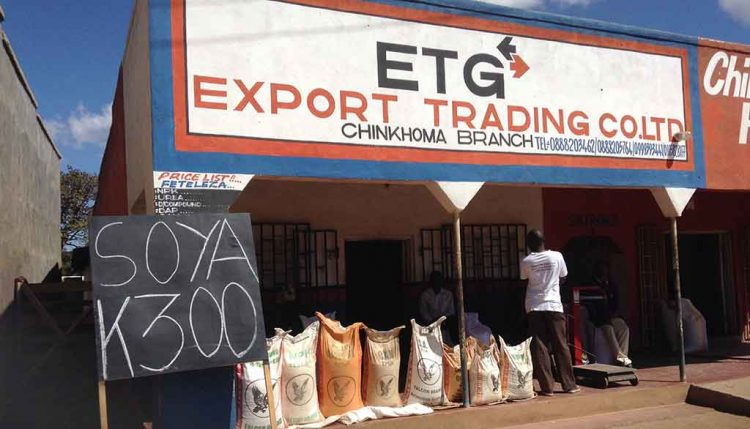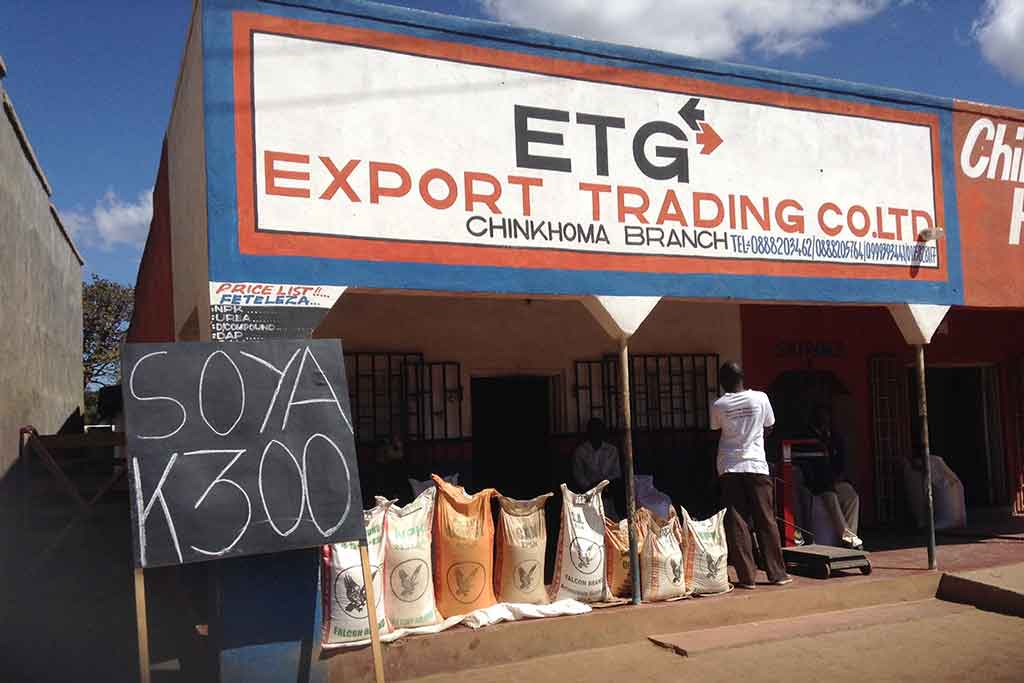
High soybean prices bode well for IITA’s MISST project
The soybean marketing season is in full swing. Buyers are everywhere looking for the crop. In a drought-hit farming season, soybean has generally done well and farmers are at least assured of getting something from their produce.
Prices have been good this year. A snap survey showed that soybean prices have increased by an average of 100% since the start of the marketing period.
Chabwera Dzonzi, a soybean farmer from Chankoma Village in the area of Traditional Authority (TA) Msakambewa in Dowa was all smiles when he sold his two 50-kg bags at Tiyenazoni Traders at Mponela in the district. “
When the marketing season opened in early April, soybean prices were at around K180 per kilogram. As of midMay, I have sold my soybean at K330 (about 50 US cents) per kilogram. From the same quantity which could have given me K18,000 ($26), I have made K33,000 ($47). This is good for us farmers, and I urge all the buyers to continue offering such good prices,” narrated a happy Dzonzi.
The story was the same at most soybean buying points around Mponela. The lowest price offered within Mponela was K310, which is higher than the prices during this time last year.
John Mtelemuka of Mandere General Dealers, who buys soybean at Mponela, gave a variety of reasons for the soaring soybean prices.
“There are several reasons for such an increase in prices. One is that there is a lot of speculation among us, the buyers. There is a belief that due to the drought experienced in the last farming season, there is less production. As such, many buyers are willing to offer higher prices and buy as much as they can,” explained Mtelemuka.
Mtelemuka added that the other reason is that more and more farmers are becoming aware that they can negotiate for higher prices. And this is true of those farmers who come in groups, clubs, and cooperatives. Other (individual) farmers who heard that their colleagues sold at a higher price also demanded the higher prices.
“We have had more farmers coming with their produce as clubs. We offer better prices to those who bring 500 kg or more. Farmers have realized this, so they would like to maximize the money they make by bulking their soybean in groups,” said Mtelemuka.
The prices were similar at Madisi, Chinkhoma in Kasungu, Kasungu boma, Santhe, Kamwendo, and Waliranji in Mchinji. The rapid price rise has been the same with the Export Trading Group (ETG) at Chinkhoma in Kasungu. Febby Gwede is a Crops Buying Officer at the Chinkhoma ETG shop―she gives another possible reason for the price increase. “
What we have observed here is that farmers are holding on to their produce having realized that the price keeps changing almost each and every week. And we encourage farmers to bring their crops in cooperatives because we offer them a higher price,” explained Gwede.
A farmer selling his soybean crop at Chinkhoma ETG shop, Mphatso Patrick, said he is happy with the prices this season, and prayed that the momentum would continue to next year.
“Last year, the highest price for soybean was K250. But this year, we are already offered K330 in May. I’m asking all the soybean buying companies to maintain these kinds of prices because obviously, it will encourage more farmers to increase the production of soybean,” explained Patrick.
Dzonzi of Mponela earlier expressed similar sentiments―of increased production in the next farming season, and hoping for continued good prices.
“This year, I planted soybean on a 0.5 hectare piece of land, and because I did not plant certified seed, I only managed to harvest 350 kg (7 bags of 50-kg each). Next year, with the information you have provided about improved certified soybean varieties, I hope to dedicate about a hectare of my land to soybean because it’s much easier to produce than tobacco,” said Dzonzi.
This is where projects like the Malawi Improved Seed Systems and Technologies (MISST) being implemented by IITA are crucial in enabling farmers like Dzonzi and Patrick to access better quality seeds and better agronomic practices.
Patrick said, “I am happy that you came to visit us. I have learned a lot from you. Next season, I will make sure I acquire certified seeds so that I harvest more. And your visits to these markets will also help to keep the prices high because the buyers will know that they are being monitored”.

